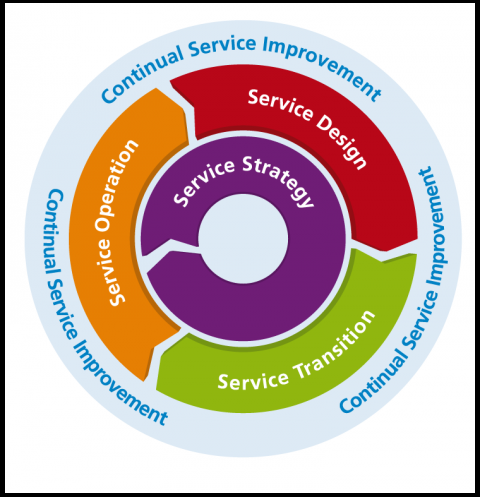The design of appropriate and innovative IT services, including their architectures, processes, policies and documentation, to meet current and future agreed business requirements.

Objectives of Service Design:
- New or changed services
- Service management systems and tools, especially the service portfolio, including the service catalog
- Technology architecture and management systems
- The processes required
- Measurement methods and metrics
The service design stage of the lifecycle starts with a set of new or changed business requirements and ends with the development of a service solution designed to meet the documented needs of the business. This advanced solution is then passed to service transition to evaluate, build, test and deploy the new or changed service.
Other Objectives Include:
- Design services to satisfy business objectives, based on the quality, compliance, risk and security requirements, delivering more effective and efficient IT and organization solutions and services aligned to organizational needs
- Design services that can be easily and efficiently developed and enhanced within appropriate timescales and costs and, wherever possible, reduce, minimize or constrain the long-term costs of service provision
- Design efficient and effective processes for the design, transition, operation, and improvement of high quality
- IT services, together with the supporting tools, systems and information, especially the service portfolio, to manage services through their lifecycle
- Design secure and resilient IT infrastructures, environments, applications and data/information resources, and capability, that meet the current and future needs of the organization
- Design measurement methods and metrics for assessing the effectiveness and efficiency of the design processes and their deliverables
- Produce and maintain IT plans, processes, policies, architectures, frameworks and documents for the design of quality IT solutions, to meet current and future agreed organization need
- Assist in the development of policies and standards in all areas of design
- Develop the skills and capability within IT by moving strategy and design activities into operational tasks, making effective and efficient use of all IT service resources
- Contribute to the improvement of the overall quality of IT service within the imposed design constraints, especially by reducing the need for reworking and enhancing services, once they have been implemented in the live environment
Value to the Organization of Service Design
- Agreeing service targets across the whole organization, ensuring critical business processes receive most attention
- Measuring IT quality in these business terms, reporting what is relevant to users (e.g. customer satisfaction, business value)
- Appropriate mapping of the IT infrastructure to the business processes
- Providing end to end business focused performance monitoring and measurement
- Periodic reporting against targets
- Reduced Total Cost of Ownership (TCO)
- Improved quality of service
- Improved consistency of service
- Easier implementation of new or changed services
- Improved service alignment
- More active service performance
- Improved IT governance
- More efficient service management and IT process Improved information and decision making
The Four Ps of Service Design
ITIL, in particular, service design, is built primarily upon the four Ps.
To deliver the benefits of service management and ITIL, these 4 Ps need to overlap each other; a popular misconception is that 1 P will fix all the rest, and many organizations believe this is the product. There has to be a balance of all 4 Ps to ensure the right mix of the appropriate design.
Many designs, plans, and projects fail through a lack of preparation and management. The implementation of ITIL service management as a practice is about preparing and planning the effective and efficient use of the four Ps: the People, the Processes, the Products (services, technology, and tools) and the Partners (suppliers, manufacturers, and vendors).
Aspects of Service Design
Service Design focuses on the following aspects:
- IT Services designed to meet business objectives.
- Services designed to be both fit for purpose and fit for use.
- The cost of ownership planned to achieve a return on investment.
- Balanced functionality, cost, and performance.
- IT services more stable and more predictable.
- Potential risk mitigated, so the IT service is protected from security threats.
- Design technology architectures, management architectures, and system management tools.
- The design of the measurement systems, methods, and metrics for services, processes, structures and underlying components.
- The design of the service solution including all agreed functional requirements, resources, and capabilities.
